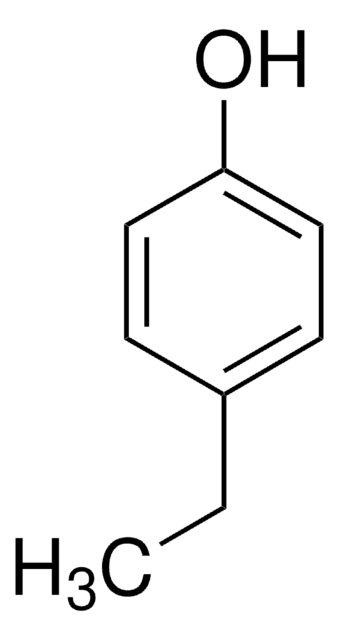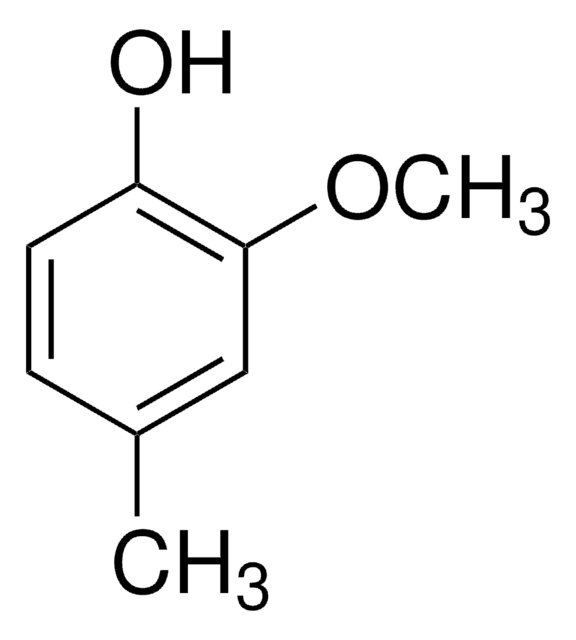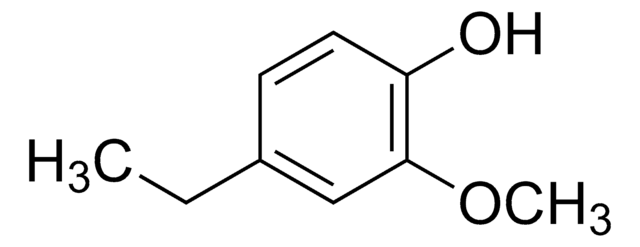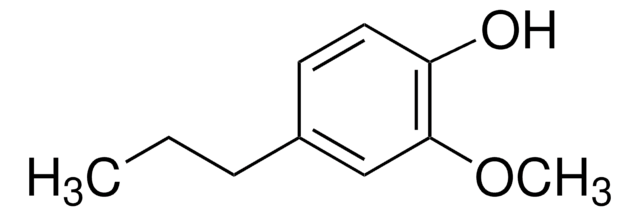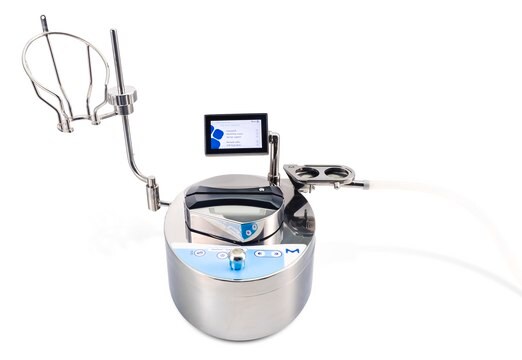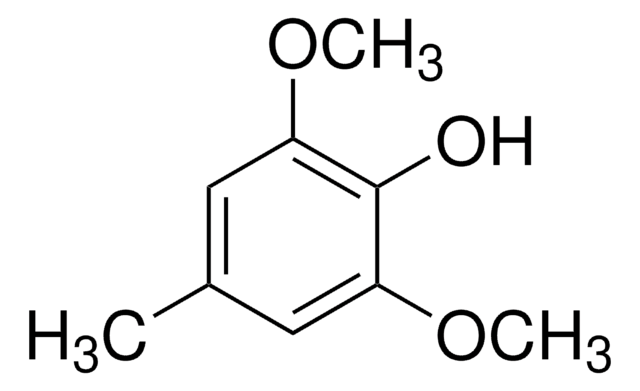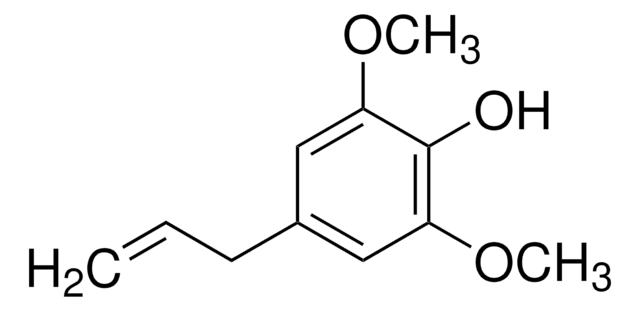W243604
4-Ethylguaiacol
≥98%, FCC, FG
Sinonimo/i:
4-Ethyl-2-methoxyphenol, NSC 82313
About This Item
Prodotti consigliati
Origine biologica
synthetic
Livello qualitativo
Grado
FG
Fragrance grade
Halal
Kosher
agenzia
follows IFRA guidelines
meets purity specifications of JECFA
Conformità normativa
EU Regulation 1223/2009
EU Regulation 1334/2008 & 178/2002
FCC
FDA 21 CFR 117
FDA 21 CFR 172.515
Saggio
≥98%
Indice di rifrazione
n20/D 1.528 (lit.)
P. ebollizione
234-236 °C (lit.)
Punto di fusione
15 °C (lit.)
Densità
1.063 g/mL at 25 °C (lit.)
applicazioni
flavors and fragrances
Documentazione
see Safety & Documentation for available documents
Allergene alimentare
no known allergens
Allergene in fragranze
no known allergens
Organolettico
bacon; clove; leather; smoky; spicy
Stringa SMILE
CCc1ccc(O)c(OC)c1
InChI
1S/C9H12O2/c1-3-7-4-5-8(10)9(6-7)11-2/h4-6,10H,3H2,1-2H3
CHWNEIVBYREQRF-UHFFFAOYSA-N
Cerchi prodotti simili? Visita Guida al confronto tra prodotti
Descrizione generale
Applicazioni
- Co-culture fermentation by Saccharomycopsis fibuligera and lactic acid bacteria improves bioactivity and aroma profile of wheat bran and the bran-containing Chinese steamed bread.: This study examines the impact of co-culture fermentation on the bioactivity and aroma of wheat bran, with a focus on the contribution of 4-Ethylguaiacol to flavor enhancement in food processing, emphasizing its potential for improving the nutritional and sensory quality of baked goods (Tang et al., 2024).
Confezionamento
Avvertenze
Warning
Indicazioni di pericolo
Consigli di prudenza
Classi di pericolo
Eye Irrit. 2 - Skin Irrit. 2 - STOT SE 3
Organi bersaglio
Respiratory system
Codice della classe di stoccaggio
10 - Combustible liquids
Classe di pericolosità dell'acqua (WGK)
WGK 2
Punto d’infiammabilità (°F)
226.4 °F - closed cup
Punto d’infiammabilità (°C)
108 °C - closed cup
Dispositivi di protezione individuale
Eyeshields, Gloves, type ABEK (EN14387) respirator filter
Scegli una delle versioni più recenti:
Possiedi già questo prodotto?
I documenti relativi ai prodotti acquistati recentemente sono disponibili nell’Archivio dei documenti.
I clienti hanno visto anche
Il team dei nostri ricercatori vanta grande esperienza in tutte le aree della ricerca quali Life Science, scienza dei materiali, sintesi chimica, cromatografia, discipline analitiche, ecc..
Contatta l'Assistenza Tecnica.